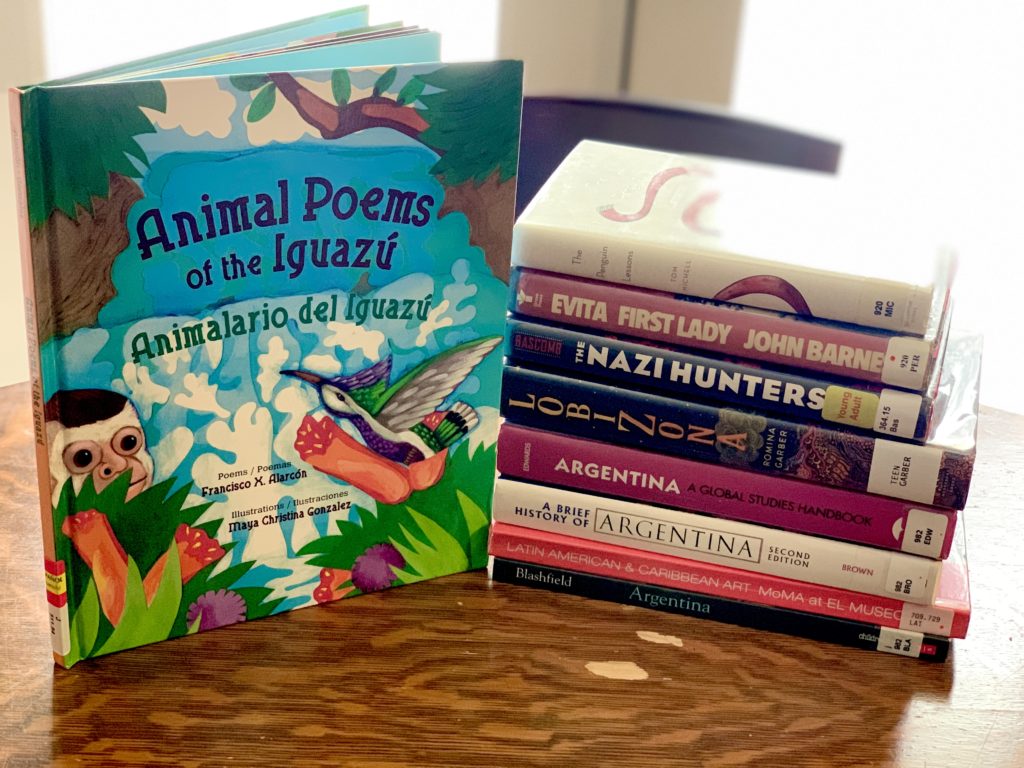
Argentina, country of South America, covering most of the southern portion of the continent. The world’s eighth largest country, Argentina occupies an area more extensive than Mexico and the U.S. state of Texas combined. It encompasses immense plains, deserts, tundra, and forests, as well as tall mountains, rivers, and thousands of miles of ocean shoreline. Argentina also claims a portion of Antarctica, as well as several islands in the South Atlantic, including the British-ruled Falkland Islands (Islas Malvinas). Argentina has long played an important role in the continent’s history. Following three centuries of Spanish colonization, Argentina declared independence in 1816, and Argentine nationalists were instrumental in revolutionary movements elsewhere, a fact that prompted 20th-century writer Jorge Luis Borges to observe, “South America’s independence was, to a great extent, an Argentine enterprise.” Torn by strife and occasional war between political factions demanding either central authority (based in Buenos Aires) or provincial autonomy, Argentina tended toward periods of caudillo, or strongman, leadership, most famously under the presidency of Juan Perón. The 1970s ushered in a period of military dictatorship and repression during which thousands of presumed dissidents were “disappeared,” or murdered; this ended in the disastrous Falklands Islands War of 1982, when Argentina invaded the South Atlantic islands it claimed as its own and was defeated by British forces in a short but bloody campaign. Defeat led to the fall of the military regime and the reestablishment of democratic rule, which has since endured despite various economic crises.
Almost all Argentines are descendants of immigrants from Europe, and Argentine culture is a lively blend of European customs and Latin American innovations. Whereas earlier generations of intellectuals, writers, composers, filmmakers, and visual artists looked to European models, the country has developed artistic forms that are uniquely Argentine—most famously the tango, the sexually charged dance of the Buenos Aires dockside district, as well as the dense, metaphysical stories of Jorge Luis Borges, which evoke the back alleys of the capital and the vast Pampas alike.




Set against Argentina’s turbulent years following the collapse of the corrupt Peronist regime, this is the story of Juan Salvador the penguin, rescued by English schoolteacher Tom Michell from an oil slick in Uruguay just days before a new term. When the bird refuses to leave Tom’s side, the young teacher has no choice but to take it with him and look after it. This is their story.

Most regions of Argentina are known for their beef-oriented diet. Grilled meat from the asado (barbecue) is a staple, with steak and beef ribs especially common. The term asado itself refers to long strips of flank-cut beef ribs.
Popular items such as chorizo (pork sausage), morcilla (blood sausage), chinchulines(chitterlings), mollejas (sweetbread), and other parts of the animal are also enjoyed.
In Patagonia, however, lamb and chivito (goat) are eaten more frequently than beef. Whole lambs and goats are traditionally cooked over an open fire in a technique known as asado a la estaca.
The most common condiment for Asado is chimichurri, a sauce of herbs, garlic and vinegar. Unlike other preparations, Argentines do not include chilli in their version of chimichurri, but it does include a still-spicy, but milder form of red pepper, ají molido.
Breaded and fried meats (milanesas) are used as snacks, in sandwiches, or eaten warm with mashed potatoes, purée. Empanadas, small pastries of meat, cheese, sweet corn, and many other fillings, are a common sight at parties and picnics, or as starters to a meal. A variation, the empanada gallega (Galician empanada), is a big, round meat pie made most commonly with tuna and mackerel (caballa in Spanish).
Vegetables and salads are also eaten by Argentines; tomatoes, onions, lettuce, eggplants, squashes, and zucchini are common side dishes.
Italian staples, such as pizza and pasta, are eaten as commonly as beef. Fideos (noodles), tallarines (fettuccine and tagliatelle), ñoquis (gnocchi) are traditionally served on the 29th day of the month, ravioles, and canelones (cannelloni) can be bought freshly made in many establishments in the larger cities. Italian-style ice cream is served in large parlours and even drive-through businesses. Other Italian staples are polenta, tarta pascualina, and pastafrola.
In Chubut, the Welsh community is known for its teahouses, offering scones and torta galesa, which is rather like torta negra.
Sandwiches de miga are delicate sandwiches made with crustless buttered English bread, very thinly sliced cured meat, cheese, and lettuce. They are often purchased from entrepreneurial home cooks and may be eaten for a light evening meal.
A sweet paste, dulce de leche is another treasured national food, used to fill cakes and pancakes, spread over toasted bread for breakfast, or served with ice cream. Alfajores are shortbread cookies sandwiched together with chocolate and dulce de leche or a fruit paste. The “policeman’s” or “truck driver’s” sweet is cheese with quince paste or dulce de membrillo. Dulce de batata is made of sweet potato/yam: this with cheese is the Martín Fierro’s sweet. Apples, pears, peaches, kiwifruits, avocados, and plums are major exports.
A traditional drink of Argentina is an infusion called mate (in Spanish, mate, with the accent on the first syllable [MAH-teh]). The name comes from the hollow gourd from which it is traditionally drunk.
AND COFFEE…..

Cafe con Leche
Coffee With Milk
4 tablespoons coffee
1 qt. water just at boiling point
hot milk (optional)
sugar to taste (optional)
Pour hot water over coffee grounds. Repeat until coffee pot is full. Pour coffee into a cup that’s half full of hot milk. Add sugar to taste, and enjoy with a pastry.


